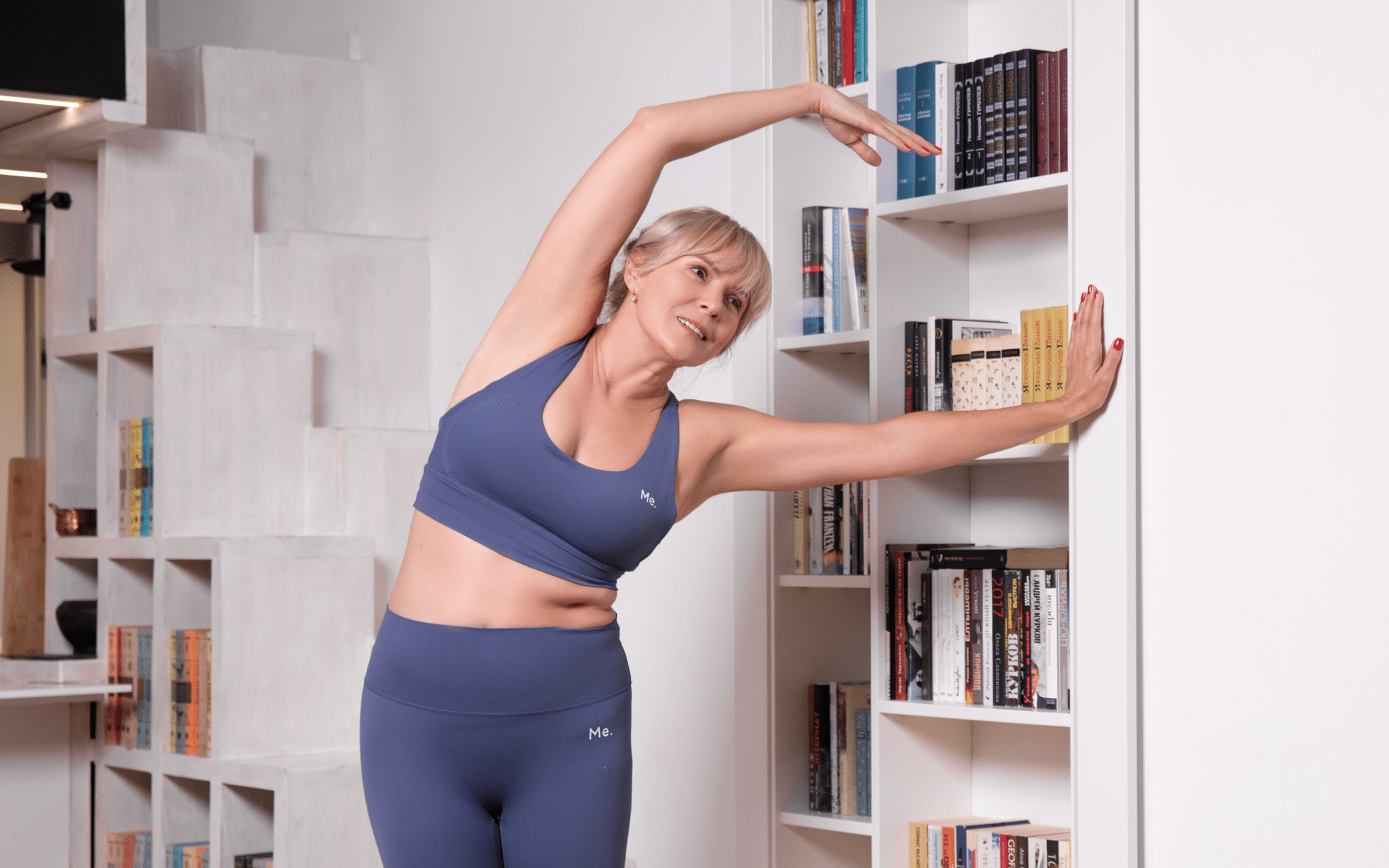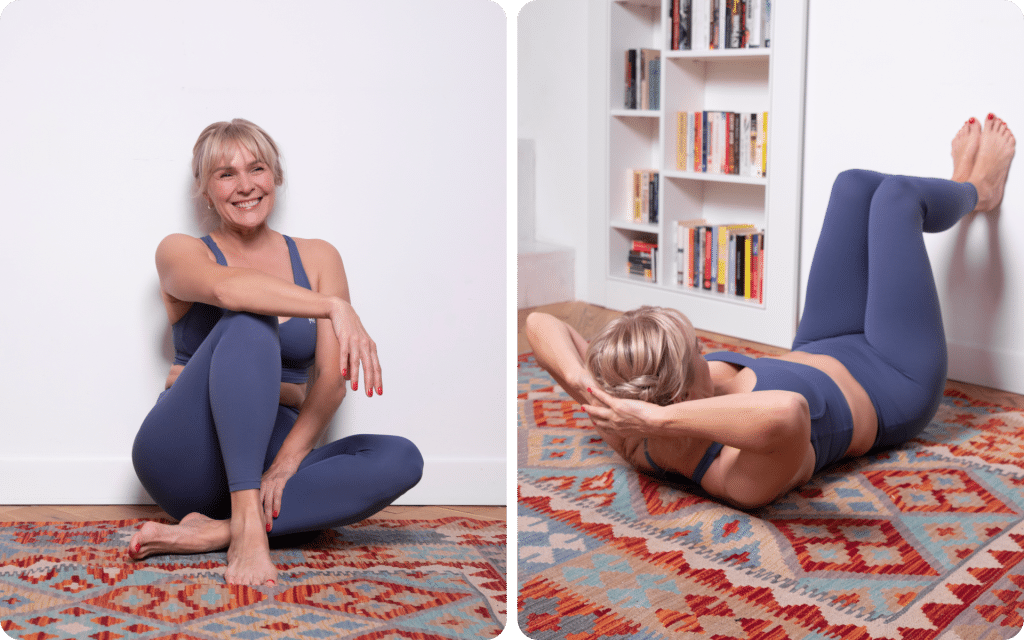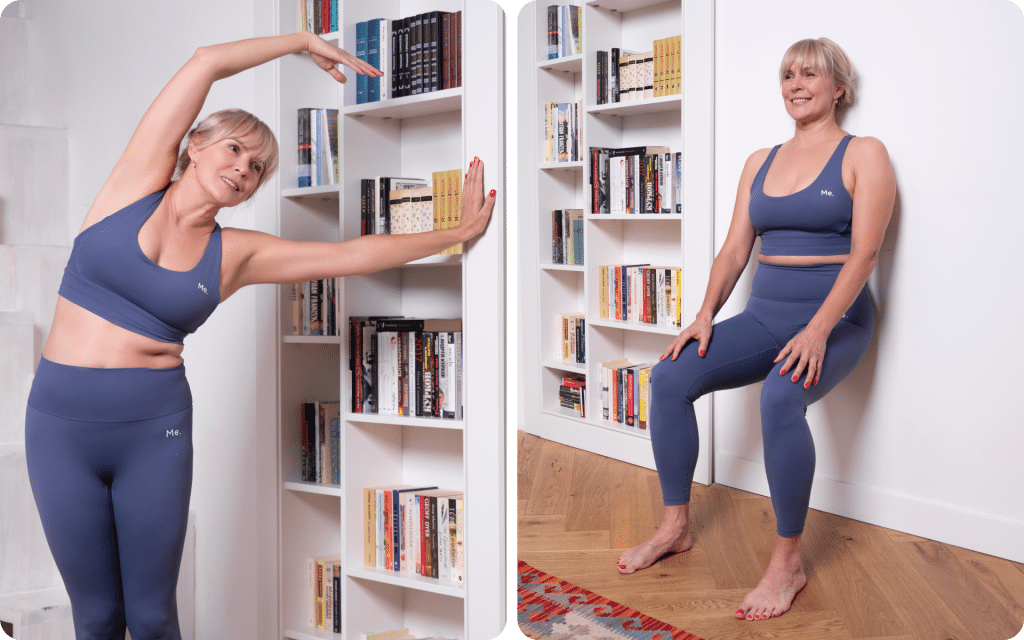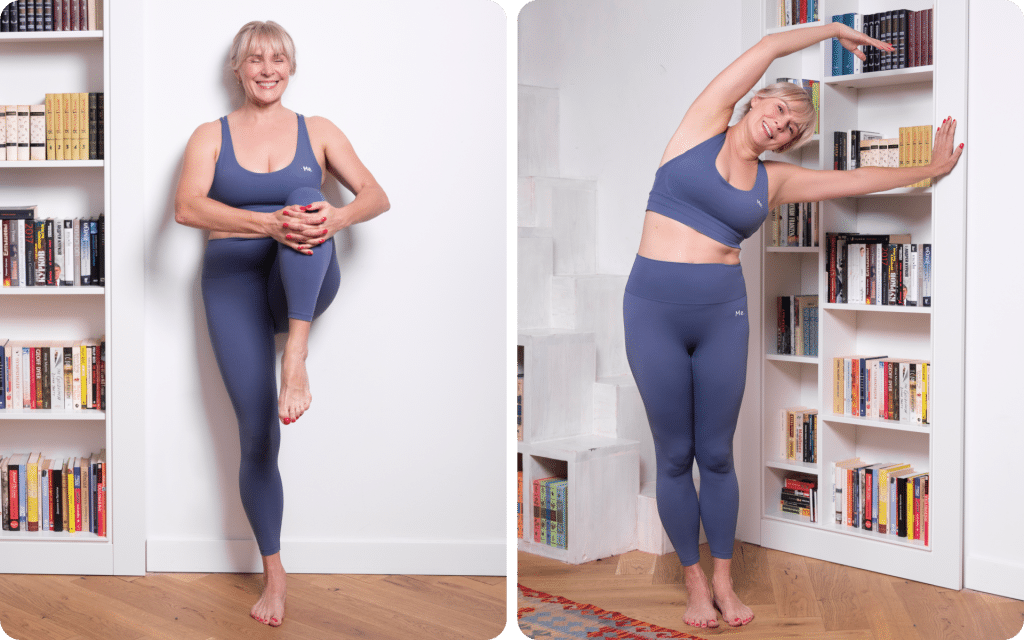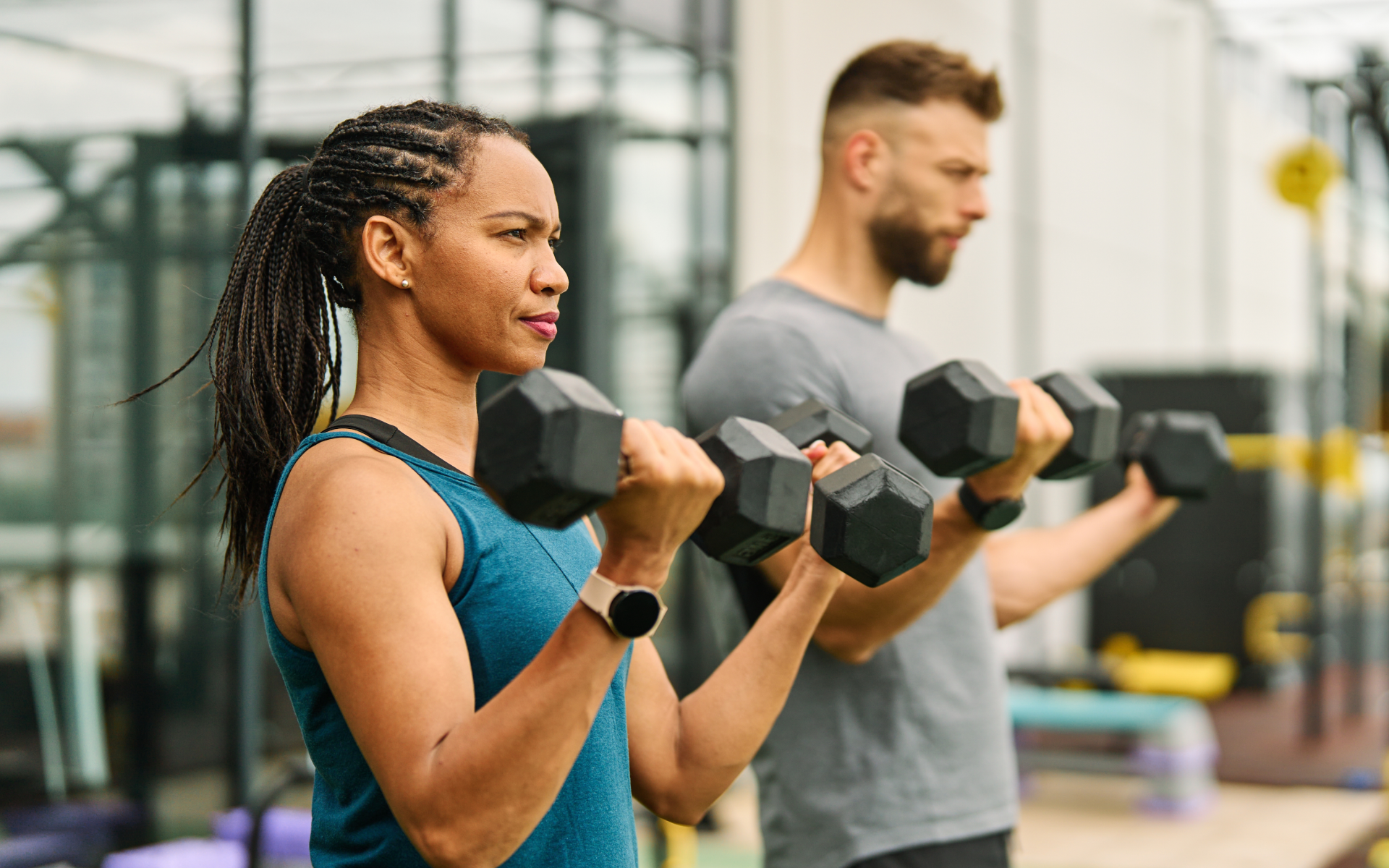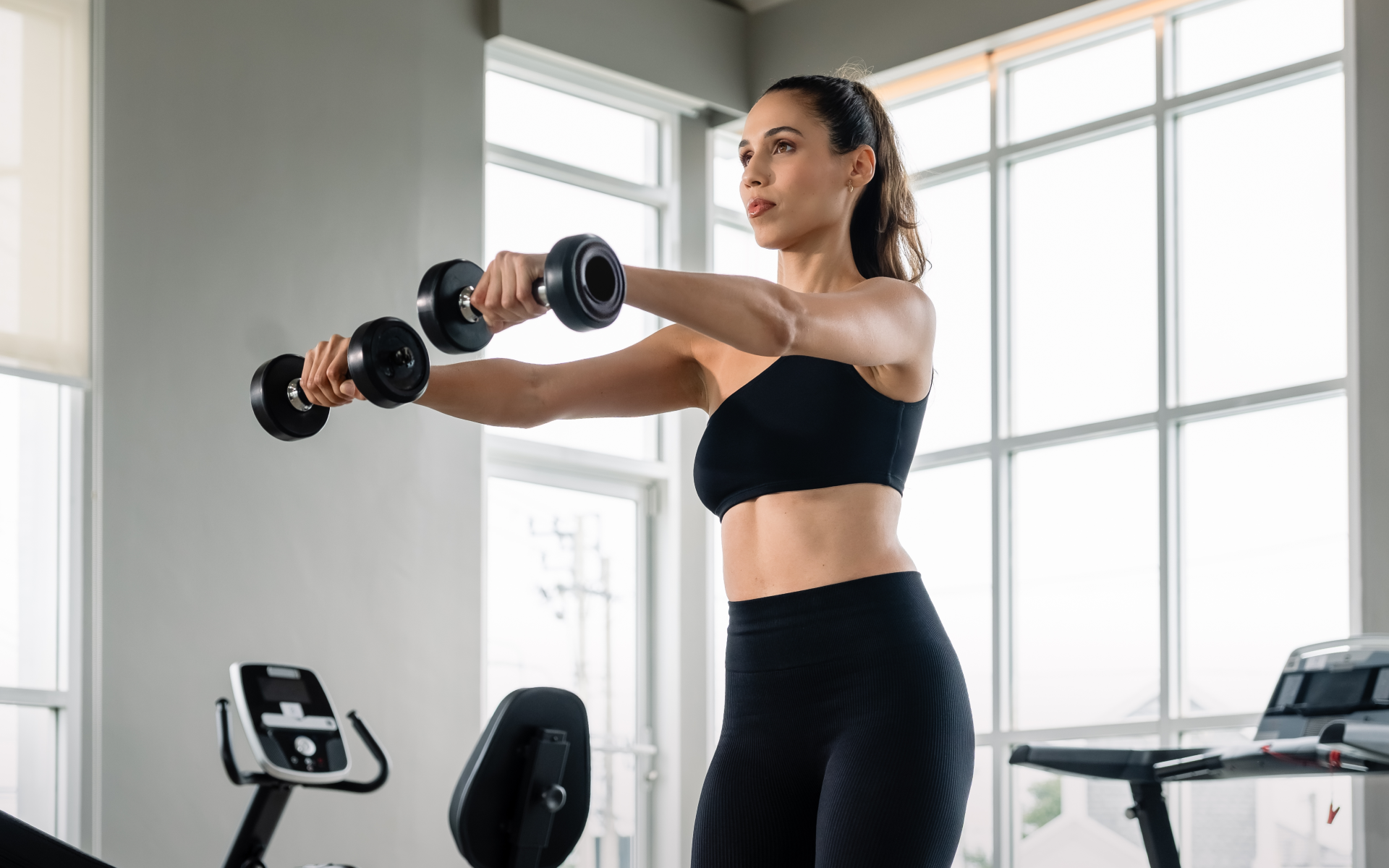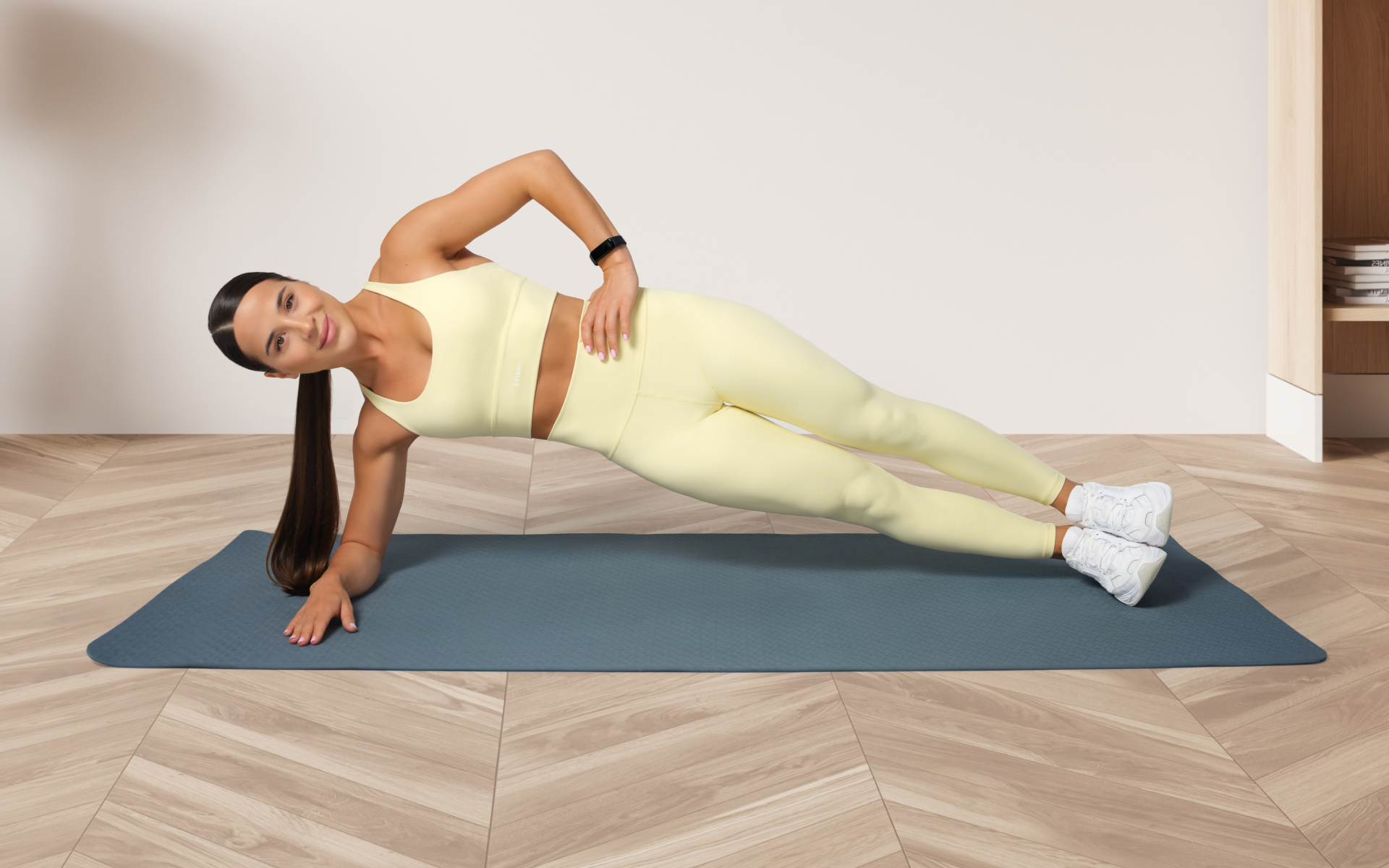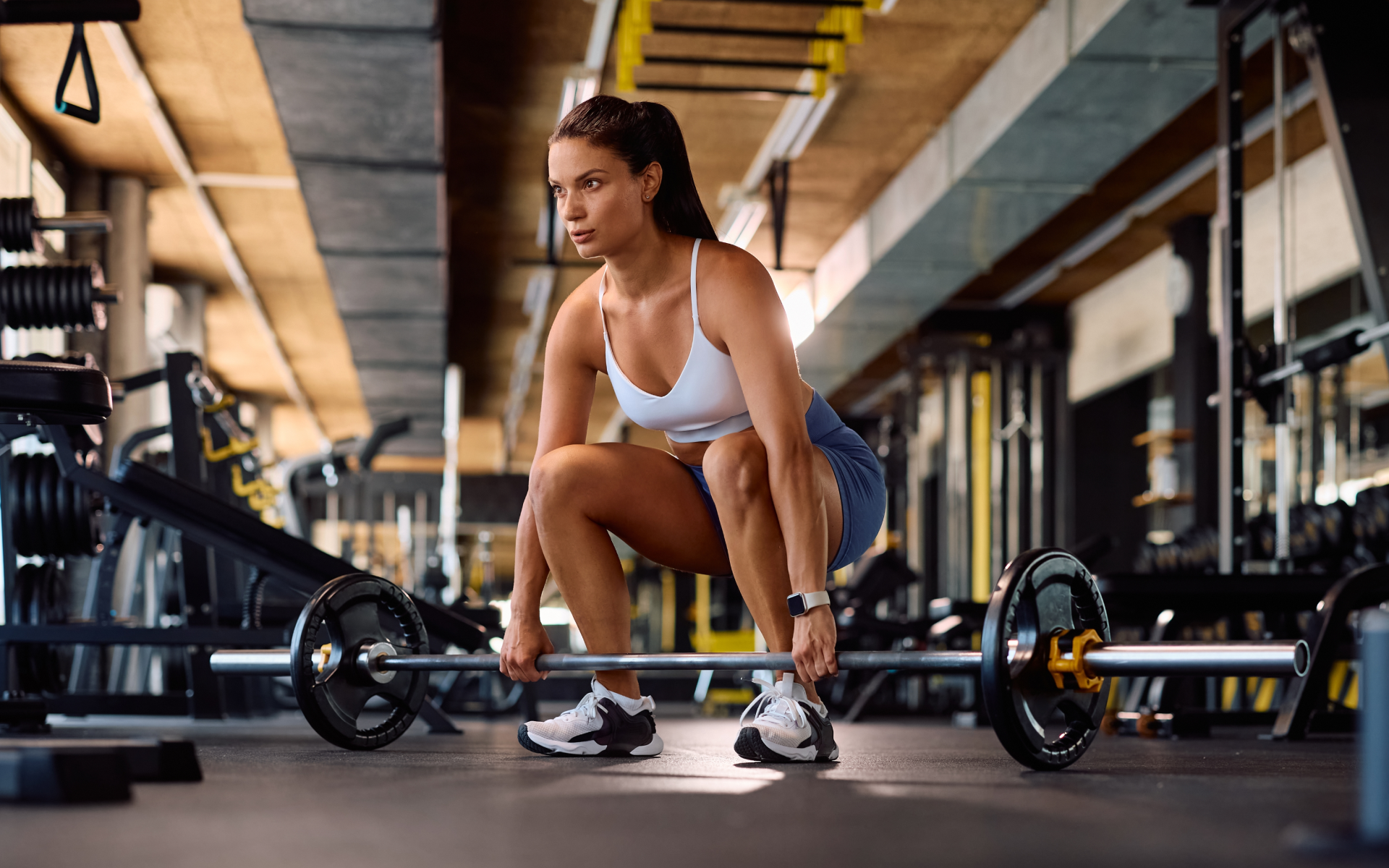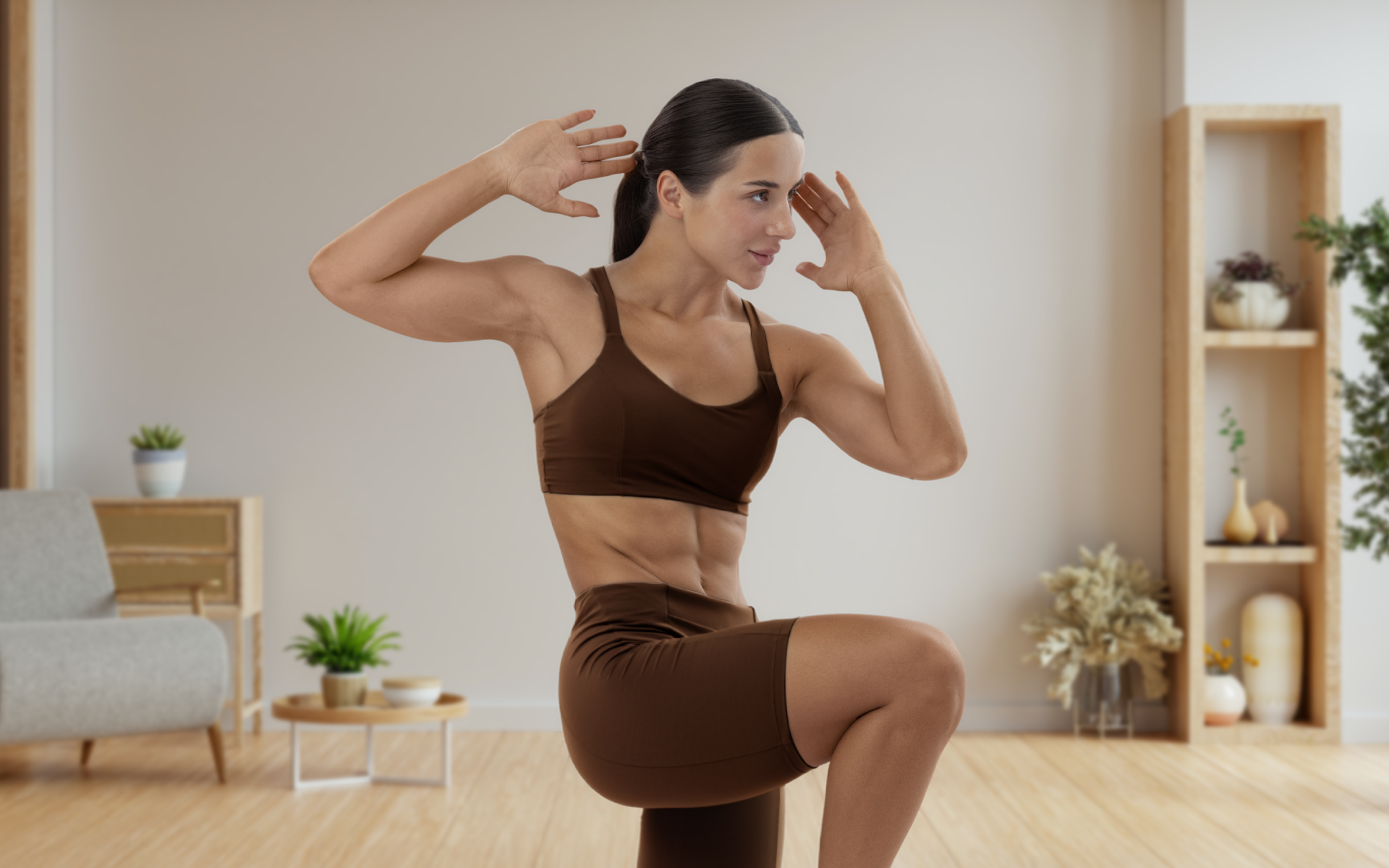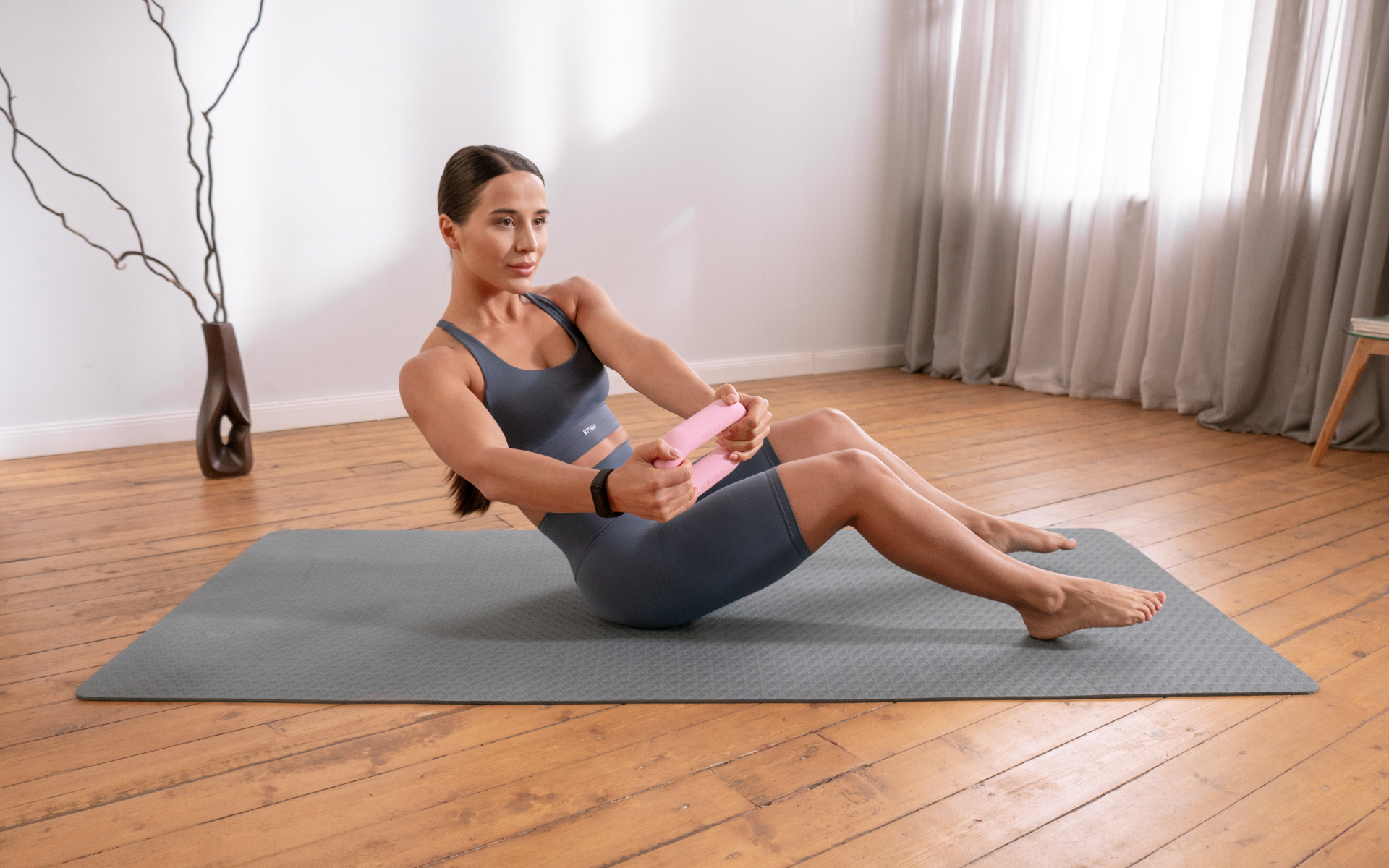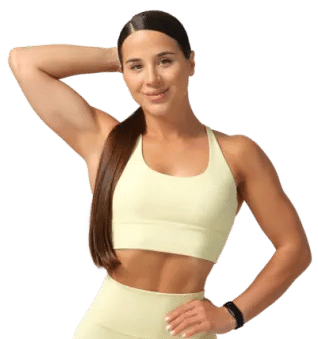Many women try to learn how to lose weight fast over 40 female-focused.
At this age, many women are juggling:
- Children and family life (nuclear and extended)
- Platonic relationships
- Busy careers
- And more
With the ongoing to-do list, adding a weight loss routine to a full plate seems like a hassle.
Unfortunately, if you want to lose weight and maintain your waistline, you must add exercise to your weekly routine.
While diet alone can help you lose excess fat, research shows that combining exercise and diet offers the best long-lasting results (1, 2, 3).
In a world filled with new exercise routines coming out all the time, which are the best exercises for women over 40?
Read on to learn how to start exercising again at 40, what exercises would benefit you, and what your goals are at this age.
What Are Some Exercises For Women Over 40?
Trying to figure out the perfect workout schedule for women over 40 can be daunting, especially if you are a beginner trying to figure this out alone.
So, what is the best exercise for women in their 40s?
We can’t say that one exercise is better than another since each has benefits. What works for someone else may not be a good fit for you, and vice versa.
To make this easier, here are some exercises to gradually add to your routine and listen to your body when performing them:
- Strength Training Exercises
Also known as resistance training, many fitness experts designed these workouts to increase muscle strength and mass by making the muscles work against resistance.
The resistance can be:
- Free weights
- Gym machinery
- Your body weight
- Resistance bands (4).
Common examples of strength training workouts include:
- Squats
- Lunges
- Pull-ups
- Deadlifts
- Push-ups
- Bicep curls
- And many more.
- Cardiovascular Exercises
Also known as aerobic exercises or simply cardio, these workouts increase heart rate and oxygen intake.
Research on this type of exercise shows that it can lead to significant weight loss.
Cardio also benefits your:
Popular aerobic exercises include:
- Jumping rope
- Swimming
- Running
- Dancing
- Walking
- Hiking
- And more.
If you wish to free yourself from all the extra pounds that have been weighing you down for way too long, start using the BetterMe: Health Coaching app and overhaul your entire life!
- Flexibility Exercises
Flexibility exercises improve joint movement, allowing you to complete daily tasks and exercise more efficiently.
They can also help reduce the risk of injury while working out.
Flexibility exercises involve static and dynamic stretches.
You or a trainer can integrate these stretches into your workout routine, for example:
- Before or after a workout
- Within a workout, as seen in yoga, Pilates, Tai Chi, and other forms of exercise. (7).
The American Heart Association recommends holding static stretches for 10-30 seconds with 3-5 repetitions each, depending on your fitness level and flexibility (8).
- Balance and Coordination
Functional exercises are workouts that improve balance and coordination.
These movements help improve everyday activities such as:
- Walking
- Standing on one leg
- Going up and down the stairs
- Shifting weight from side to side
These functional exercises are essential for overall fitness.
Better balance and coordination will help reduce the risk of injury, which is especially important when using free weights (9).
Research shows that such exercises can improve the quality of life of older adults by reducing the risk and fear of:
Read more: Pilates For Older Women: Benefits And How To Get Started
Is It Harder To Get In Shape After 40?
Getting in shape can become more challenging for some older women.
According to a study published in the International Journal of Environmental Research and Public Health, some barriers to exercise for women include:
Exercise Environment:
- Lack of convenient schedules
- Lack of self-confidence
- The expenses
Time Expenditure vs Family Obligations:
Where women feel like working out takes time away from:
- Themselves
- Their familial relationships
- Work and family obligations
Physical Exertion:
Feeling like working out is too complicated or tiring.
Family Discouragement:
Spouses or family members may discourage them from exercising.
These barriers make it harder for many women, regardless of age, to get in shape (12).
In an older study published in the Health Psychology journal, researchers found that some barriers to exercise faced by middle-aged and older women include:
- Older age
- Lack of energy
- Less education
- Absence of enjoyable scenery
- Lack of hills in one’s neighborhood
- Infrequent observation of others exercising in one’s neighborhood (13).
In addition, women over 40 may find it harder to get in shape due to age-related muscle loss and hormonal and metabolic changes that make it easier for their bodies to store fat and more challenging to burn calories.
Can A 40 Year Old Woman Get Toned?
Yes, she can. Despite all the barriers mentioned above, a 40-year-old woman, or any woman over 40, can still lose weight and gain muscle mass to help her look more toned.
How Can I Reshape My Body After 40?
Challenging does not mean impossible.
Here are some tips for getting in shape for any woman aged 40 and above:
- Watch What You Eat
Many factors determine your weight, but your diet is the main one.
Without a proper diet, you will not see any changes on the scale, regardless of what else you change in or about your life.
According to the Dietary Guidelines for Americans 2020-2025:
The daily recommended calorie intake for women aged 40 and above is 1800 to 2200. (14).
The guidelines state that experts have based these caloric recommendations on age, sex, height, weight, and activity level.
As always, other individual differences, such as health conditions and personal factors, may affect your diet recommendations, so consult your doctor.
If you hope to lose weight, a good starting point is to cut 500-750 calories from your average daily calorie intake.
Calorie reduction creates a calorie deficit and ensures you are not following drastic cutting or unhealthy weight loss methods, which can put you at risk for various health complications.
You should also ensure that your diet comprises whole foods, providing your body with nutrition without extra:
- Empty calories
- Added sugars
- High sodium
- Trans fats
Learn more about the menopause diet 5-day plan to lose weight.
- Increase Your Physical Activity
As we’ve seen above, middle-aged women face many barriers to working out.
However, many of these barriers, especially personal barriers, can be overcome through a simple change in mindset.
Believing that working out is too hard or tiring will keep you from exercising.
However, consistent and reasonable exercise, such as a 30-minute walk, can have:
- Significant health benefits
- Provide stress relief
- Boost your mood
You may have low self-confidence, no knowledge of exercises, or a gym membership is too expensive.
Try these options instead:
- You can work out at home using guided videos.
- Join a free, local community of like-minded and kind individuals where you can all learn and improve together without judgment.
- You can find many free options online for at-home workout plans for females over 40.
- Paid fitness apps can offer home workout plans at a lower price than gym memberships.
- Search for “over 40 workout plan female at home” or “home workout videos for women” to find videos you can follow.
Allow yourself to think past the barriers to come up with solutions.
Add exercise to your routine without sacrificing too much of your life, family obligations, or work schedule.
Remember that 30 minutes is all you need to start seeing changes.
- Check Your Hormones
If your diet and physical activity are good, but your weight keeps increasing, it might be time to check your hormones.
Hormonal weight gain happens when certain hormones are imbalanced, potentially leading to a reduction in metabolic rate.
Estrogen is closely associated with:
- Weight
- Fat distribution
- Muscle mass in women
While many women do not experience a drop in this hormone or menopause until their 50s, a fall in estrogen can affect any woman at any age—even those in their 30s or 40s (15).
Research shows that when estrogen levels drop, fat accumulation in the body, especially in the abdominal area, increases (16, 17).
If your estrogen levels have started dropping, speak to your doctor. This may be the unexplained cause of your stubborn weight.
Check out this article for more information on how to lose hormonal weight gain.
Reasons why BetterMe is a safe bet: a wide range of calorie-blasting workouts, finger-licking recipes, 24/7 support, challenges that’ll keep you on your best game, and that just scratches the surface! Start using our app and watch the magic happen.
- Build Muscle
As mentioned above, muscle loss and a slower metabolism make weight loss for women over 45 more difficult.
The good news is that building more muscle can quickly kill 2 birds with 1 stone.
Resistance training is a fantastic way to increase muscle mass.
Not only can this make your physique more defined, which may increase your self-confidence, but having more muscle also boosts your metabolic rate, helping you burn calories and fat throughout the day, even when resting.
Resistance training can involve simple bodyweight exercises (e.g., calisthenics), free weights, gym machinery, or resistance bands.
- Reduce Your Stress Levels
The older we get, the more stressors we seem to acquire and the less time we have to deal with said stress.
Unfortunately, stress is terrible for our mental and physical health, including weight.
Research shows a direct correlation between increased stress levels and overweight and obesity, so finding ways to unwind and destress can be beneficial (18).
The World Health Organization recommends these simple habits to relieve stress:
- Exercise
- Healthy eating
- A good sleep schedule
- Connecting with loved ones (19).
What Are The Best Exercises For Women In Their 40s?
The best exercise for women over 40 doesn’t exist, as there are many options for various fitness goals and levels.
However, for the best fitness and health benefits, a woman over 40 should have all exercise categories in her weekly routine, including:
- Flexibility exercises
- Strength training
- Balance
- Cardio
What Exercise Should Women Over 40 Avoid?
There is no specific workout that middle-aged women need to avoid.
If your body can handle it, explore and engage in any workout routine that interests you.
However, if you have significant joint pain, you should avoid high-impact workouts as they aggravate the issue further.
Read more: Balance Pilates for Seniors: 10 Exercises You Can Do on Your Own
How Many Times A Week Should A 40-Year Old Woman Workout?
The American Heart Association recommends adults aim for at least this amount of weekly movement:
- 75 minutes of vigorous aerobic activity
- 150 minutes of moderate-intensity aerobic activity
- Or a combination of both spread throughout the week (20).
- Additionally, 2 days of moderate to high-intensity strength training.
Any activity that increases your heart rate and is sustainable is a good choice! Some common examples include brisk walking, cycling, swimming, hiking, jogging, elliptical, high-intensity interval training (HIIT), and rowing machines. Yes, Pilates is a good, low-impact workout that women of any age can participate in. It can help improve balance, flexibility, and muscle strength. Both forms of exercise can provide excellent benefits for women of any age. It ultimately comes down to what you enjoy the most. Mix it up, try some of both, and find your preferences. Weightlifting and Pilates offer unique benefits, so your choice should depend on your goals and preferences. Due to the added resistance from weights, weightlifting is the better option for increasing muscle mass and strength. Conversely, Pilates is excellent for improving flexibility, balance, and core strength. Ultimately, both forms of exercise can complement each other and contribute to overall fitness and health.Frequently Asked Questions
What is the best cardio after 40?
Is Pilates good for women over 40?
Is yoga or Pilates better for older women?
Should I lift weights or do Pilates?
The Bottom Line
The exercise choices for women over 40 are the same as for anyone else, regardless of age or gender.
Lifestyle, environmental, and societal factors are many women’s main barriers to exercise.
However, if you are experiencing these barriers, you can overcome them by changing your routine and mindset and setting boundaries.
If you are a woman aged 40 and up, do not underestimate what you can do, and do not shy away from wanting better for yourself. A little discomfort and hard work will be worth it in the long run.
DISCLAIMER:
This article is intended for general informational purposes only and does not serve to address individual circumstances. It is not a substitute for professional advice or help and should not be relied on for making any kind of decision-making. Any action taken as a direct or indirect result of the information in this article is entirely at your own risk and is your sole responsibility.
BetterMe, its content staff, and its medical advisors accept no responsibility for inaccuracies, errors, misstatements, inconsistencies, or omissions and specifically disclaim any liability, loss or risk, personal, professional or otherwise, which may be incurred as a consequence, directly or indirectly, of the use and/or application of any content.
You should always seek the advice of your physician or other qualified health provider with any questions you may have regarding a medical condition or your specific situation. Never disregard professional medical advice or delay seeking it because of BetterMe content. If you suspect or think you may have a medical emergency, call your doctor.
SOURCES:
- Diet, exercise or diet with exercise: comparing the effectiveness of treatment options for weight-loss and changes in fitness for adults (18–65 years old) who are overfat, or obese; systematic review and meta-analysis (2015, pmc.ncbi.nlm.nih.gov)
- A comparison of diet versus diet + exercise programs for health improvement in middle-aged overweight women (2020, pmc.ncbi.nlm.nih.gov)
- A systematic review on the effectiveness of diet and exercise in the management of obesity (2023, sciencedirect.com)
- Strength Training | Definition, Types & Benefits (2024, study.com)
- Cardiovascular Effects and Benefits of Exercise (2018, pmc.ncbi.nlm.nih.gov)
- Aerobic exercise alone results in clinically significant weight loss for men and women: Midwest Exercise Trial-2 (2013, pmc.ncbi.nlm.nih.gov)
- How to improve your strength and flexibility (2022, nhs.uk)
- Flexibility Exercise (Stretching) (2024, heart.org)
- Evidence Supporting Balance Training in Healthy Individuals: A Systemic Review (2009, researchgate.net)
- Taking balance training for older adults one step further: the rationale for and a description of a proven balance training programme (2015, pmc.ncbi.nlm.nih.gov)
- The Effect of Balance and Coordination Exercises on Quality of Life in Older Adults: A Mini-Review (2019, pmc.ncbi.nlm.nih.gov)
- Barriers to Exercise in Younger and Older Non-Exercising Adult Women: A Cross Sectional Study in London, United Kingdom (2009, pmc.ncbi.nlm.nih.gov)
- Personal and environmental factors associated with physical inactivity among different racial-ethnic groups of U.S. middle-aged and older-aged women (2000, pubmed.ncbi.nlm.nih.gov)
- 2020-2025 (n.d., dietaryguidelines.gov)
- Menopause (2024, who.int)
- Understanding weight gain at menopause (2012, pubmed.ncbi.nlm.nih.gov)
- Estrogen Deficiency and the Origin of Obesity during Menopause (2014, pmc.ncbi.nlm.nih.gov)
- Obesity and Stress: A Contingent Paralysis (2022, pmc.ncbi.nlm.nih.gov)
- Stress (2023, who.int)
- American Heart Association Recommendations for Physical Activity in Adults and Kids | American Heart Association (2024, heart.org)
